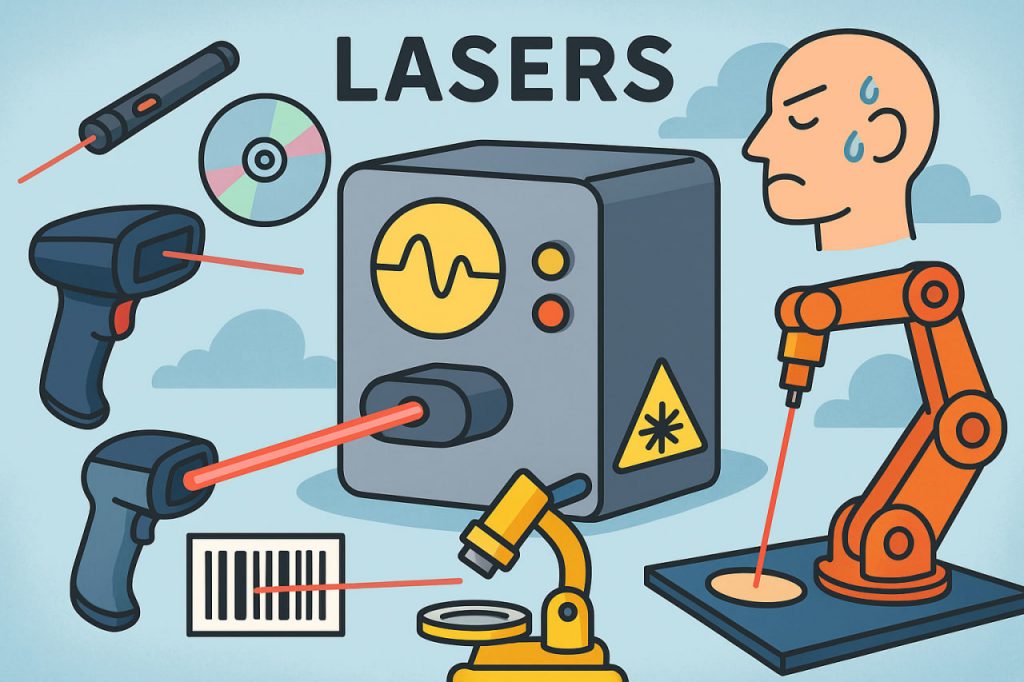A laser (short for Light Amplification by Stimulated Emission of Radiation) is a device that produces a narrow, powerful beam of light. Unlike regular light, which scatters in all directions, a laser emits coherent light—waves that travel in the same direction and phase. This makes lasers extremely precise and focused.
Lasers are used in a wide range of applications, from medicine and manufacturing to communications, entertainment, and science.
How Does a Laser Work?
A laser consists of three main parts:
- Energy source (pump) – Provides energy to excite atoms or molecules inside the laser.
- Gain medium – A special material (gas, crystal, liquid, or semiconductor) that amplifies light when excited.
- Mirrors and optical cavity – Light bounces back and forth inside the cavity until it becomes strong enough to escape as a beam.
When atoms in the gain medium are energized, they release photons (particles of light). These photons stimulate other atoms to emit identical photons, creating a cascade of intensified, focused light—the laser beam.
Types of Lasers
- Gas lasers – Use gases like CO₂ or helium-neon; often used in surgery and barcode scanners.
- Solid-state lasers – Use crystals like ruby or Nd:YAG; used in industry and medicine.
- Semiconductor lasers (diode lasers) – Small, efficient lasers found in DVD players, laser pointers, and fiber optics.
- Fiber lasers – Use optical fibers doped with rare-earth elements; popular in cutting and welding.
Each type has different strengths depending on the wavelength, intensity, and purpose.
Applications of Lasers
Medicine
- Eye surgeries (LASIK)
- Dental procedures
- Cancer treatments and tissue repair
Industry
- Precision cutting, drilling, and welding
- 3D printing with high accuracy
Communication
- Fiber-optic cables use laser light to carry internet and phone signals at high speeds
Science and Research
- Spectroscopy, laser cooling, and quantum experiments
- LIDAR for mapping terrain or detecting pollution
Everyday Life
- Barcode scanners, laser printers, CD/DVD players
- Entertainment light shows and laser projectors
Are Lasers Safe?
Lasers can be dangerous if misused. High-powered beams can burn skin, damage eyes, or start fires. For safety:
- Never look directly into a laser beam
- Use protective eyewear for high-powered lasers
- Follow safety guidelines in industrial or medical environments
Glossary
- Laser – A device that emits a focused beam of coherent light.
- Photon – A particle of light.
- Coherent light – Light waves that are aligned in the same phase and direction.
- Gain medium – The material inside a laser that amplifies light.
- LIDAR – A laser-based system for measuring distance or creating 3D maps.


